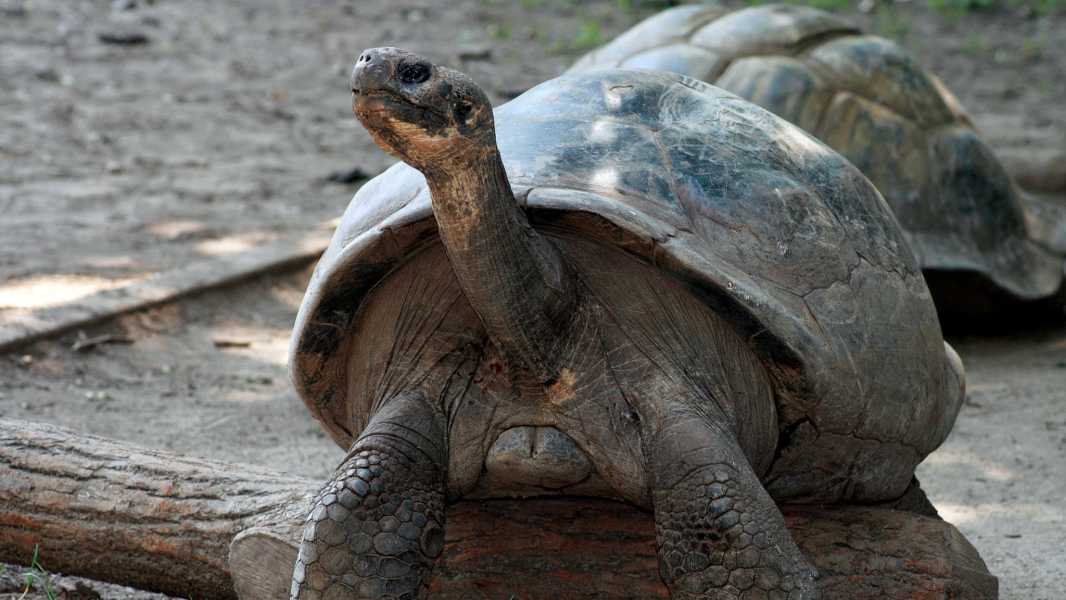
Mommy is an endangered western Galapagos tortoise who has lived at the Philadelphia Zoo since 1932. (Photo courtesy of Philadelphia Zoo)
This endangered giant tortoise became the oldest first-born mother of her species to give birth to her first litter at approximately 100 years of age.
The Philadelphia Zoo recently hatched eggs laid by an elderly western Santa Cruz Galapagos tortoise (Chelonoidis niger porteri) named Mommy. Her exact age is unknown, but Mommy has lived at the zoo for more than 90 years.
Western Santa Cruz Galapagos tortoises are endangered in their native Galapagos Islands, and there are fewer than 50 of them in U.S. zoos. This is the first time western Santa Cruz Galapagos tortoises have hatched at the Philadelphia Zoo in its more than 150-year history, according to a statement from the zoo.
“This is a major milestone in the history of the Philadelphia Zoo, and we are thrilled to share this news with our city, our region, and the world,” said Jo-Elle Mogerman, president and CEO of the Philadelphia Zoo. “Mom came to the zoo in 1932, which means anyone who has visited the zoo over the past 92 years has likely seen her.”
The Western Santa Cruz Galapagos tortoise is a subspecies of the Galapagos tortoise. These giant tortoises are the largest tortoises on the planet. Males are generally larger than females and grow to about 1.8 meters (6 feet) in length and weigh about 570 pounds (260 kilograms), according to the San Diego Zoo Wildlife Alliance.
Human activity in the Galapagos has wiped out several species of tortoises and pushed the western Galapagos Santa Cruz tortoise to the brink of extinction. Historically, sailors have reduced the tortoise population by hunting them for meat. People have also destroyed their habitat and introduced invasive species such as goats, which compete with the tortoises for food, and predators such as cats and rats, which prey on young tortoises and their eggs, according to the International Union for Conservation of Nature's Red List of Threatened Species.
Mom is part of a captive breeding program at U.S. zoos aimed at preserving this subspecies of tortoise. She first produced offspring with a male named Abrazzo, who is also about 100 years old. Abrazzo moved to Philadelphia in 2020 after living at the Riverbanks Zoo and Gardens in South Carolina, where western Santa Cruz Galapagos tortoises were successfully bred in 2019, according to a statement.
History is being made! Endangered Galapagos tortoises hatch at Philadelphia Zoo! – YouTube

See more
Turtles and other reptiles typically retain the ability to reproduce throughout their lives after reaching adulthood, allowing them to continue reproducing even into old age. Researchers aren't sure how long Galapagos tortoises can live, but one individual has been recorded living to 171 years old, according to the San Diego Zoo Wildlife Alliance.
After mating, Mommy laid 16 eggs in November 2024. Keepers removed the eggs and placed them in an artificial incubator. Like most turtles, the sex of hatchling Galapagos tortoises is determined by the temperature at which the eggs are incubated. At temperatures below 82.4
Sourse: www.livescience.com





